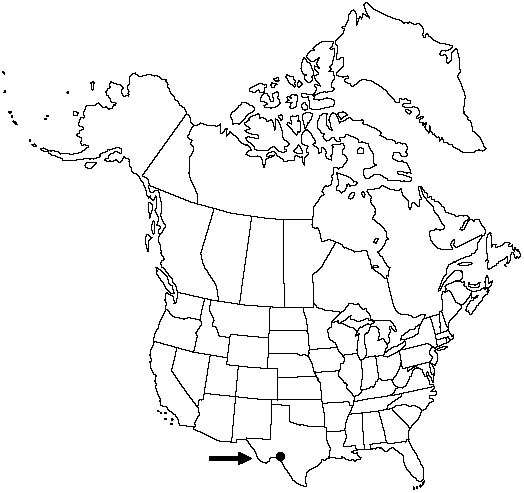Difference between revisions of "Dennstaedtia globulifera"
Bot. Jahrb. Syst. 34: 455. 1904.
FNA>Volume Importer |
FNA>Volume Importer |
||
| Line 20: | Line 20: | ||
}}<!-- | }}<!-- | ||
| − | --><span class="statement" id="st- | + | --><span class="statement" id="st-undefined" data-properties=""><b>Stems </b>long-creeping, 3–10 mm diam. <b>Leaves</b> clustered to well separated to distant, erect or arching, 2–3 × (1–)2(–3) m. <b>Petiole</b> yellowish to brown throughout, lustrous, ca. 1/3 length of blade, sparsely pubescent with soft, jointed hairs. <b>Blade</b> green, dull, ovate to deltate, 3(–4)-pinnate, nearly as wide as long, base truncate, apex acute, with reddish jointed hairs on veins abaxially, glabrous adaxially. <b>Basal</b> segments of pinnules alternate; ultimate segments ovate to elliptic, base ± equilateral, margins lobed ca. 1/2 distance to midrib. <b>Sori</b> globose; indusia globose. <b>Spores</b> trilete, strongly 3-lobed, surface coarsely verrucose. <b>2n</b> = ca. 94.</span><!-- |
-->{{Treatment/Body | -->{{Treatment/Body | ||
| + | |phenology=Sporulates summer. | ||
|habitat=Moist caves or sinks | |habitat=Moist caves or sinks | ||
|elevation=300–500 m | |elevation=300–500 m | ||
| Line 42: | Line 43: | ||
|basionyms=Polypodium globuliferum | |basionyms=Polypodium globuliferum | ||
|family=Dennstaedtiaceae | |family=Dennstaedtiaceae | ||
| + | |phenology=Sporulates summer. | ||
|habitat=Moist caves or sinks | |habitat=Moist caves or sinks | ||
|elevation=300–500 m | |elevation=300–500 m | ||
| Line 49: | Line 51: | ||
|publication year=1904 | |publication year=1904 | ||
|special status= | |special status= | ||
| − | |source xml=https://jpend@bitbucket.org/aafc-mbb/fna- | + | |source xml=https://jpend@bitbucket.org/aafc-mbb/fna-data-curation.git/src/9216fc802291cd3df363fd52122300479582ede7/coarse_grained_fna_xml/V2/V2_141.xml |
|genus=Dennstaedtia | |genus=Dennstaedtia | ||
|species=Dennstaedtia globulifera | |species=Dennstaedtia globulifera | ||
| − | |||
| − | |||
| − | |||
| − | |||
| − | |||
| − | |||
| − | |||
| − | |||
| − | |||
| − | |||
| − | |||
| − | |||
| − | |||
| − | |||
| − | |||
| − | |||
| − | |||
| − | |||
| − | |||
| − | |||
| − | |||
| − | |||
| − | |||
| − | |||
| − | |||
| − | |||
| − | |||
| − | |||
| − | |||
| − | |||
| − | |||
| − | |||
| − | |||
}}<!-- | }}<!-- | ||
-->[[Category:Treatment]][[Category:Dennstaedtia]] | -->[[Category:Treatment]][[Category:Dennstaedtia]] | ||
Revision as of 13:11, 27 July 2019
Stems long-creeping, 3–10 mm diam. Leaves clustered to well separated to distant, erect or arching, 2–3 × (1–)2(–3) m. Petiole yellowish to brown throughout, lustrous, ca. 1/3 length of blade, sparsely pubescent with soft, jointed hairs. Blade green, dull, ovate to deltate, 3(–4)-pinnate, nearly as wide as long, base truncate, apex acute, with reddish jointed hairs on veins abaxially, glabrous adaxially. Basal segments of pinnules alternate; ultimate segments ovate to elliptic, base ± equilateral, margins lobed ca. 1/2 distance to midrib. Sori globose; indusia globose. Spores trilete, strongly 3-lobed, surface coarsely verrucose. 2n = ca. 94.
Phenology: Sporulates summer.
Habitat: Moist caves or sinks
Elevation: 300–500 m
Distribution

Tex., Mexico, West Indies, Central America, South America.
Discussion
The tropical Dennstaedtia globulifera and D. bipinnata are among the largest ferns in the flora. In the flora Dennstaedtia globulifera is found only in Val Verde County, Texas.
Selected References
None.